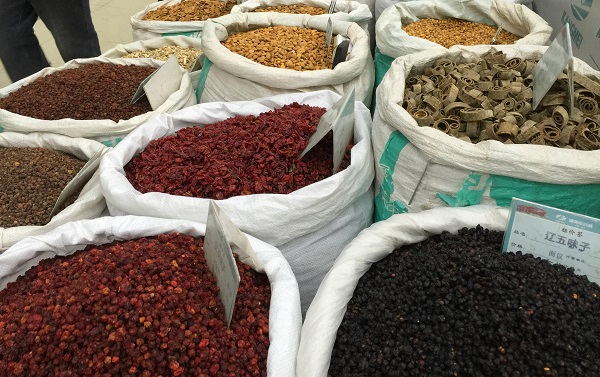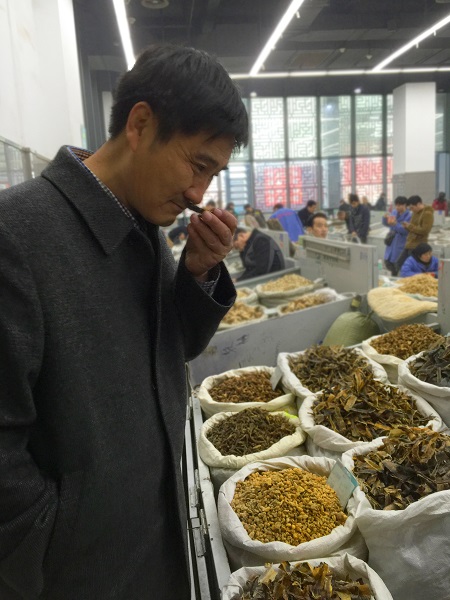Trip to Bozhou, Part 1: Chinese Medicine City
Friends often ask me about my travels to China, expecting tales of both harrowing roadside outhouses and supremely sublime food. I have visited China at least once per year sine 1982 and I realize many of my experiences may serve to offer a better understanding of the Chinese herb industry to our customers in America.

Earlier this month, I visited the city of Bozhou, in Anhui province. Bozhou is home to arguably the largest Chinese herb market in the world. The purported birthplace of the famous physician Hua Tuo, Bozhou is estimated to have over 1 million mu (almost 165,000 acres) of herb cultivation, and has 1 million people engaged in the planting, processing, or distribution of herbs. One major feature of Bozhou is its impressive herb trading complex. Officially the Kang Mei Chinese Medicine City (Kang Mei is a publicly traded company and the largest supplier of raw herbs to China's hospitals), the complex is a sprawling 35,000 square meters (about six-and-a-half football fields), and contains over 1000 herb shops and 6000 stalls. There are zones for regular herbs and for more precious, expensive herbs, and an entire floor akin to a farmers market. Although we rarely purchase from herb trading centers, preferring to deal directly with farmers whenever possible, it's always fun to visit.
 I was there with our Mayway Hebei partner, Mr. Wang, and our head herb master/buyer, Mr. Zhang. (Mayway Hebei is our joint-venture raw herb processing facility.) Mr. Zhang travels for more than 300 days out of the year, meeting with herb dealers, visiting farmers to inspect crops, and generally collecting industry news. It was a special treat for me to watch Mr. Zhang in action at the herb market. His discerning eyes spotted the fakes, the aesthetically “enhanced", and the overly processed. As he does in the field, at the herb market Mr. Zhang measures quality using true organoleptic means—sight, taste, and smell. He could not only identify all the herbs, processed or not, but could tell the quality and freshness purely by smell, and sometimes threw in a good lick or nibble to establish a fair price!
I was there with our Mayway Hebei partner, Mr. Wang, and our head herb master/buyer, Mr. Zhang. (Mayway Hebei is our joint-venture raw herb processing facility.) Mr. Zhang travels for more than 300 days out of the year, meeting with herb dealers, visiting farmers to inspect crops, and generally collecting industry news. It was a special treat for me to watch Mr. Zhang in action at the herb market. His discerning eyes spotted the fakes, the aesthetically “enhanced", and the overly processed. As he does in the field, at the herb market Mr. Zhang measures quality using true organoleptic means—sight, taste, and smell. He could not only identify all the herbs, processed or not, but could tell the quality and freshness purely by smell, and sometimes threw in a good lick or nibble to establish a fair price!
On the bottom floor of the central trading building was a true “farmers market" for herbs. There were hundreds of small metal lockers about the size of a Postal Service mail dropbox, each of which four farming families might rent together. They will arrive at 6 am to display their herbs, which are samples of what has been harvested or is about to be harvested from their own fields. These are herbs often grown on a couple of acres or less, mostly yielding only a few hundred pounds of fresh herbs. Buyers will inspect, smell, taste, and haggle, and if a deal is made, the farmer often leaves. Unlike the other more permanent herb stalls in the complex, this “farmers market" closes around noon, at which time there is a flurry of activity and slamming lockers (the place was deserted within 15 minutes) when the farmers rush home for lunch and to process orders, often straight from their fields.

